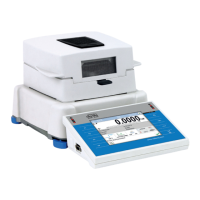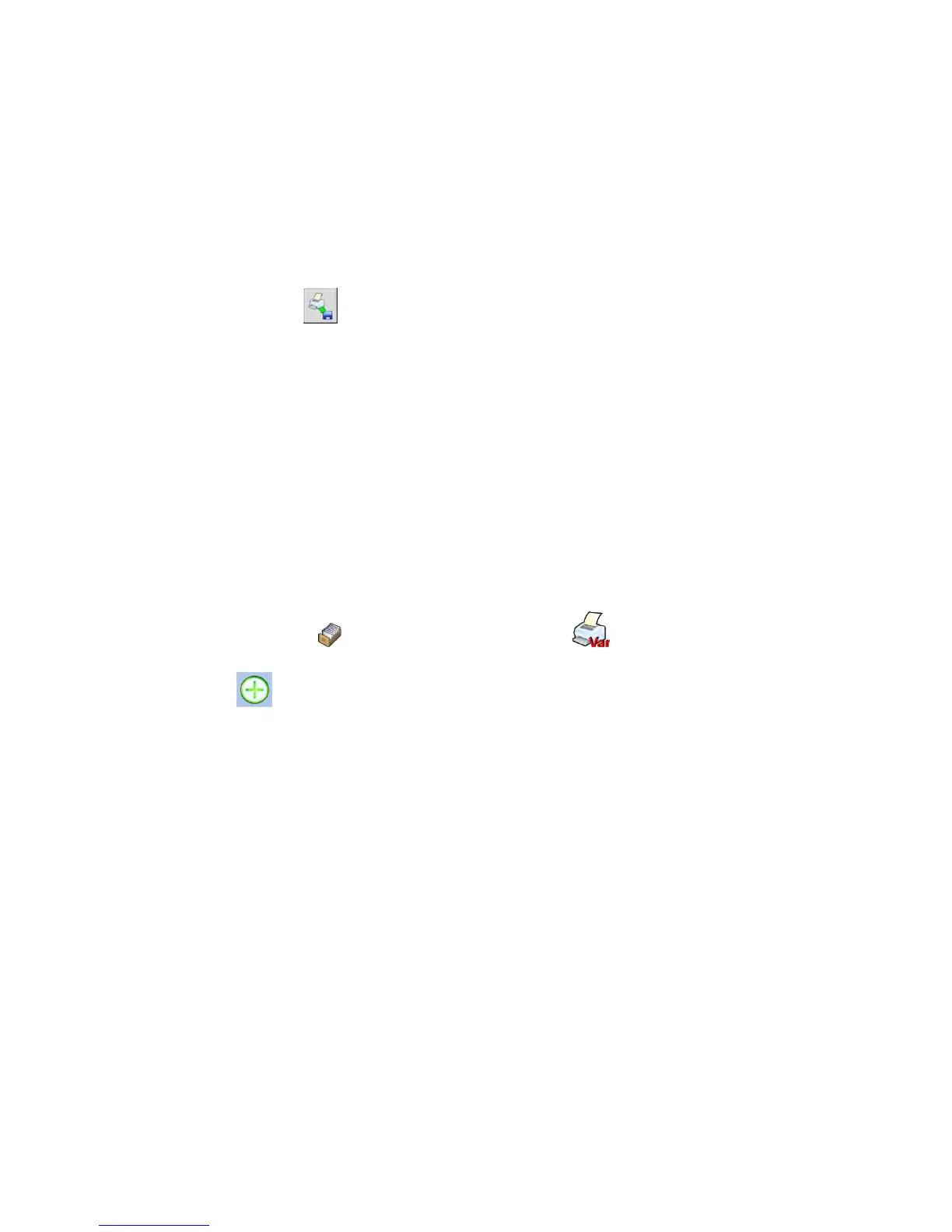Example of Printout no. 2 – printout template from a file
A file with printout template has to have an extension: *.txt or *.lb and
contain all constant and variable data. After importing, the content of a
printout template can be modified.
Procedure:
− Design a *.txt or *.lb file in an optional editor
− Copy the file to a data storage device
− Connect the data storage device to moisture analyzer’s USB port
− press [4] < download a printout template from a file > key
− moisture analyzer’s display shows data stored on the data storage
device connected to the USB port
− search for a file with printout template and press its name
− the printout template is automatically copied to an editing field
19.13. Universal variables
Universal Variables are a set of alphanumeric data which are combined with
printouts, products or other information related to weighing. Each variable
should have its name, code and value specified.
Procedure
• Enter submenu < Databases>, and press < Universal variables >
field
• Press < Add > key should a new universal variable be added
• If a universal variable already exists in the database, press field with its
name, and insert required modifications to the following fields: code, name,
value.
Caution:
It is possible to use an option for searching a record by name or code.
19.14. Database operation
Function allows to operate data stored in a database. There are three possible
options: Export weighment database to file, Delete database, Delete
weighments and reports.

